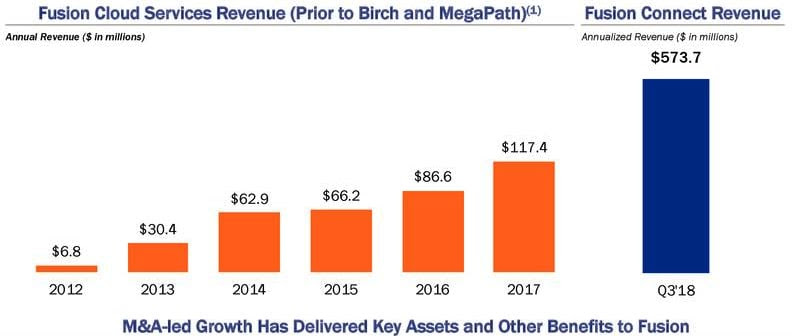In “Thanos Snaps, Retail Disappears“ and “Even Captain America Can’t Bring Back This Much Retail (Long Continued Closures)“ we listed out the stupendous volume of retail closures that have transpired already in 2019. As we’ve stated before, there are no signs of this trend abating. Indeed, since the second piece shipped on April 28, 2019, several more companies have announced closures.
For instance, Francesca’s announced the closure of 20 stores. Regis Corporation ($RGS), the owner of Supercuts, is shedding 330 locations and, like so many other corporates, offloading risk onto unsuspecting franchisees. While its stock performance is strong, Carter’s Inc. ($CRI) closed a net 10 stores amid negative 3.7% comps. Sally Beauty Holdings Inc. ($SBH) closeda net 69 stores in the last year, primarily under its Sally Beauty Supply outlet. Outside of the conventional retail space, CVS Health Corporation ($CVS) is closing 46 locations this quarter.
One beneficiary of all of this: the liquidators. We can put some numbers around this.
Back in March, B. Riley Financial Inc. ($RILY) reported fiscal 2018 earnings. On the earnings call, the company noted the following:
Last year was also a banner year for our Great American Group retail liquidation division. We successfully completed the liquidation of the inventory assets of Bon-Ton Stores. For a sense of scale Bon-Ton was one of the largest U.S. liquidations in retail history by inventory value.
We completed the liquidation of over 200 stores with associated inventory value at approximately $2.2 billion. In 2018, we also participated in the liquidation of Toys "R" Us which contributed to our strong results in the segment. Momentum in this business is carrying forward into 2019 as a liquidation of Bon-Ton real estate assets continues to be under way and with our recently announced participation in the liquidations of Gymboree and Payless Shoes.
The Payless store closing event, which began on February 17, is the largest liquidation by store count in retail history with sales being conducted at approximately 2,100 stores and associated inventory value at over $1 billion. In January, the firm announced participation in the liquidation of 798 Gymboree and Crazy 8 stores across the U.S. and Canada.
RILY reported Q4 revenues of $10.1mm, a meaningful uptick from the $4.2mm the company reported in Q4 ‘17. Income rose from $0.1mm to $2.3mm YOY. For the year, revenues were $55mm and income was $27mm, a solid 49% margin. As for guidance, the company foreshadowed:
…momentum has already carried over into 2019. We expect to realize significant contributions from the Bon-Ton liquidation results for the first half, in addition to the results from our current involvement in Gymboree and Payless liquidations. We expect to see high levels of market activity to continue through Q2 as distressed retailers continue to focus on retail – real estate consolidation and purging excess inventory.
Last week, RILY reported Q1 ‘19 earnings and Great American Group continued to crush it. The “auction and liquidation segment” generated $20.7mm in revenue — double what it did in Q4 and more than 25% better YOY. Income increased to $11.5mm, or approximately 5x the income reported in Q4. This adds up to a margin of 55%.
Think about those numbers for a second: while retail employees are getting steam-rolled, stores are closing everywhere, malls are undeniably shaken and CMBS investors are, by necessity, vigilantly monitoring credit with a watchful eye, here is Great American Group absolutely rolling in dough on account of these retail liquidations. Great revenue, great income. Stellar margins.
Now, as we’ve discussed previously, there is an anti-competitive element in all of this. Rather than face off against one another and compress those beautiful margins, the liquidators all continue to engage in club deals for these big retailers. If the revenue, income and margin is THAT good, doesn’t that mean that debtors — and by extension, creditors thereof — are leaking a significant amount of value?🤔
****
Meanwhile, the news out of Facebook Inc. ($FB) probably had the liquidators over at Great American Group licking their chops. This week, Instagram is rolling out the ability for influencers to tag specific products in their photos, enabling consumers to click a photo, see what’s for sale, and purchase that product without ever leaving the Instagram feed. For those of you with zero design sensibility, suffice it to say that this is a big deal. No more friction of going back and forth between Instagram and external check out pages. This is going to mint tons of cash by the Kardashian and other influencer-influenced faithful.
Taylor Lorenz at The Atlantic writes:
Millions of users rely on influencers to sift through products and make recommendations. But until now, figuring out, for instance, exactly what shade of lipstick an influencer is wearing has been hard. Apps such as LikeToKnowIt, which allows you to shop influencers’ posts by taking screenshots, have garnered millions of users by providing a stopgap solution. Brand-specific social-shopping platforms such as H&M’s Itsapark have also stepped into the market. Still, many would-be consumers spend hours commenting on influencers’ Instagram posts asking for more product information, or fruitlessly attempting to locate a product online.
Interestingly, the influencers “won’t receive a cut of the sales their posts generate.” They will, however, get access to advanced metrics that may (or may not, as the case may be) arm them with leverage in negotiations with ad buyers. More from Lorenz:
“As an influencer, I don’t care if I don’t get a cut [of the sales] at the moment,” Song continued. “If it makes my followers’ life easier and they don’t have to message me asking ‘Where do you get that product?,’ I’m okay with doing it for free for now.” Many influencers are also betting that the increased engagement and spike in followers they’ll likely get by incorporating shoppable posts will more than pay off in the short term.
Color us skeptical. Much like the media is grappling with having a more direct relationship with its readers and that notion is pushing more and more writers to newsletters/subscriptions and away from advertising, we can’t help but to wonder how long influencers will be okay peddling other people’s products without getting a cut. With products like Shopify Inc. ($SHOP) enabling basically anyone the ability to create a direct-to-consumer business, it doesn’t stretch the imagination to conclude that a number of influencers are going to start getting into their own private label wares, if they haven’t already. It’s not like Kylie Jenner was having trouble moving product before: this gives her a shot of steroids.
What does this mean for retail? For starters, they’re going to be paying Facebook an awful lot of money out of their advertising budgets in the short term. In the longer term, however, they may find newfound competition from the likes of various Gen Z influencers that Gen X may have never even heard of. If malls are having trouble drawing traffic now, just imagine how much harder it will be when its easier for teen age Molly to just click on Instagram, scroll to her favorite influencer, and click through to some makeup without even interrupting continued scrolling. Facebook is savage.
Reminder: Nothing in this email is intended to serve as financial or legal advice. Do your own research, you lazy rascals.





















